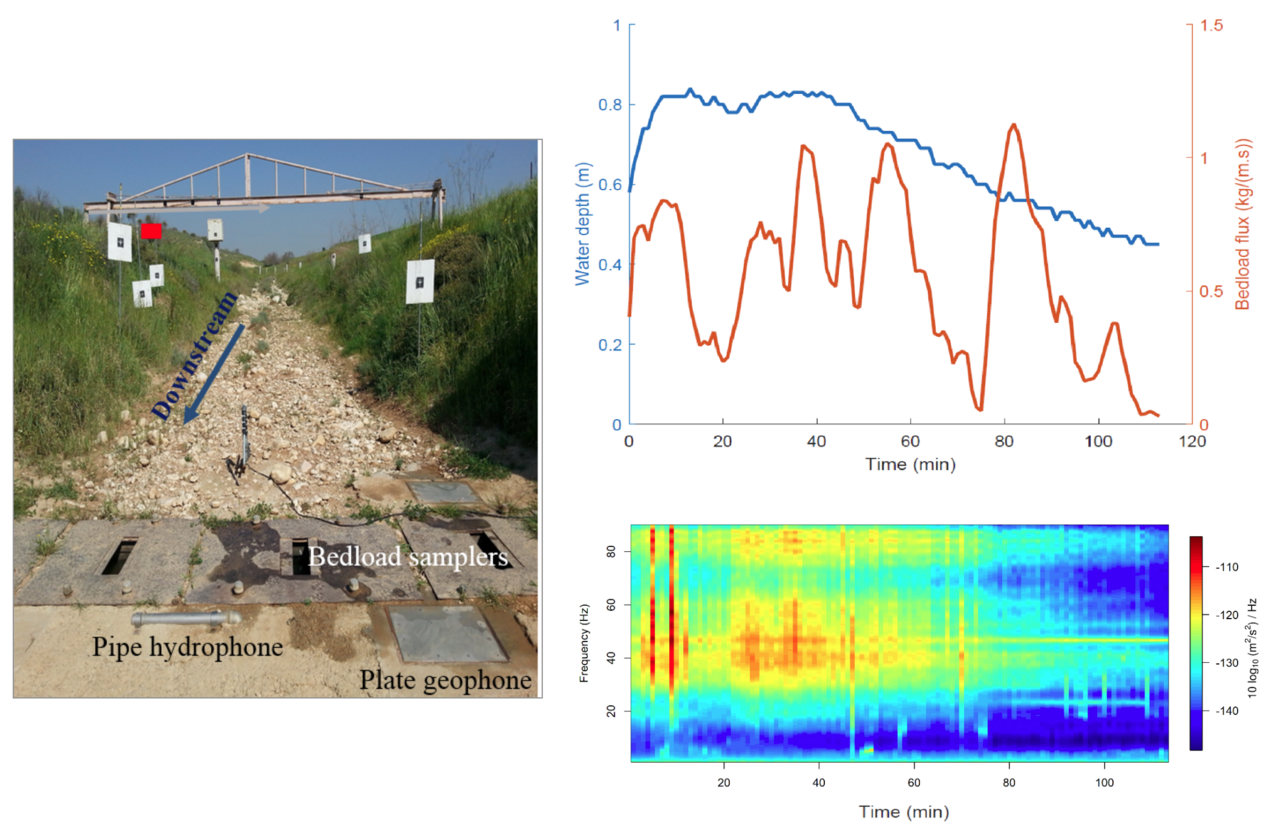ESR03: Environmental seismology of river floods in three continents: identifying, understanding and quantifying the effect of bed roughness on seismic monitoring of bedload flux and turbulence
Description:
Bedload transport is of major concern as it is the main fluvial process denuding landforms, as well as determining the shape and the stability of rivers. Hence, its importance is foremost in fluvial geomorphology, geodynamics, hydraulic engineering and related fields. Several publications have identified the seismic response due to bedload and due to turbulence. However, the separate effects of turbulence and of bedload flux are complex. Deciphering the effect of bed roughness is expected to allow seismic identification of the resultant turbulent fluctuations and separately of bedload dynamics.
To this end use will be made of Reid Samplers - unique continuous and automatic bedload monitoring devices operating in tandem with seismic monitoring at 7 sites of successively rougher channel beds: The Arroyo de los Pinos (New Mexico, USA) with equal portions of sand, granules and coarser gravel; the Nahal Eshtemoa (Israel) with a 30 yr bedload record and ca 10% sand with long granule 'flats'; the Drau and Vent alpine channels (Austria) with coarse gravel; the Ashi-Arai-Dani and the larger Joganzi Rivers (Japan) with gravelly beds containing boulders; and the Baiyang River (Taiwan), a bouldery-gravel bedrock canyon using acoustic sensing instead of physical sampling. A 40 Hz electromagnetic current meter will be contemporaneously deployed at several of these sites to monitor turbulent fluctuations, as has been achieved at two field sites and in a large flume. Seismic monitoring began several years ago in the US, Israel and Taiwan, with seismic devices about to be deployed in the Austrian and Japanese sites. The PhD student will visit all or most sites, spending some time to become first-hand acquainted with them, field efforts will be minor relative to data analysis, as most fieldwork will be undertaken by others, with whom interaction will be key. This study is expected to make a breakthrough in our understanding of and deciphering the seismic monitoring of bedload across many fluvial landscapes of varying roughness.
Link to apply (deadline: 01/03/2023): https://euraxess.ec.europa.eu/jobs/860483
Keywords: analyses of seismic data, mathematical modelling, floods, bedload
Host University: Ben-Gurion University of the Negev (bgu.ac.il), Israel
Supervisor: Jonathan Laronne, Department of Earth and Environmental Sciences (bgu.ac.il); Department of Geography and Environmental Development - default (bgu.ac.il)
Co-supervisor: Walter Fabian, Swiss Federal Institute for Forest, Snow and Landscape Research - WSL Home - WSL, Switzerland
Collaborations will be undertaken with the following institutions and staff members: Science | Engineering | Research Institution: New Mexico Tech (nmt.edu)- Susan Bilek, Dan Cadol; KYOTO UNIVERSITY (kyoto-u.ac.jp)- Masumi Yamada, Sushuke Miyata; Mie University | Mie University English Homepage (mie-u.ac.jp)- Daizo Tsutsumi; BOKU- Helmut Habersack; Rolf Rindler; Startseite: GFZ (gfz-potsdam.de)- Jens Turowski.


